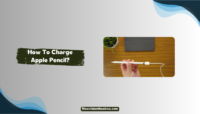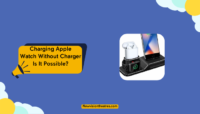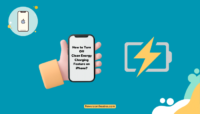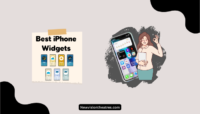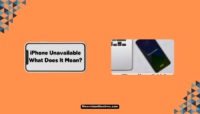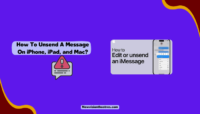Are you seeing the notification on your iPhone saying Liquid Detected in Lightning Connector? Stay tuned to find out why! In 2018, Apple introduced the iPhone XS and XR as successors to the groundbreaking iPhone X, which garnered attention for its eye-catching design and its convenient features. One such feature is a safety mechanism that prevents you from charging your phone.
If you’ve received a notification forbidding you from charging your Apple device, there’s no need to worry—it’s not a malfunction but a safety measure. But what triggers this notification? Join me as we explore this error message and uncover the reasons behind it. Ultimately, I will provide you with an easy DIY guide to resolve the issue independently.
Let’s get going.
What Is Liquid Detected In Lightning Connector Error?
So why does your iPhone keeps saying Liquid Detected in Lightning Connector? The error notification is self-explanatory, appearing when you attempt to connect a charger or accessories to your iPhone’s Lightning port.
If you encounter this notification, it indicates that either your Lightning port or Lightning cable is wet. As a safety measure, your iPhone has disabled charging to prevent potential damage.

As part of Apple’s safety mechanism, iPhones are packed with smart liquid sensors that can sense even the smallest droplets of water in the lightning port. So whenever you attach a charger or lightning accessory to the port, it suspends the charging instantly, and you are not allowed to use the port until it’s completely dry.
Here are the two notifications you may get:
1. Liquid Detected In lightning Connector:
The notification is triggered when you connect a Lightning accessory, such as earphones or a power bank, to your iPhone, and liquid has been detected in the Lightning connector. To safeguard your phone from potential harm, charging is temporarily suspended.

2. Charging Not Available:
Similarly, when you connect your iPhone charger to the device, and charging is halted due to moisture detected in the Lightning port, you will get the alert saying Charging Not Available.

Why Am I getting Liquid Detected in Lightning Connector Notification?
Based on a survey, water contact is the leading cause of phone damage. Attempting to charge your iPhone with a wet Lightning port can lead to corrosion of the port’s pins or the cable, resulting in permanent damage or connectivity issues for your iPhone or accessories.
Additionally, water in the port can create a short circuit and potentially damage vital chips on the phone’s motherboard when connected to a power source.

Apple has integrated intelligent moisture sensors in iPhones to save you from expensive repairs. These sensors detect water presence and immediately suspend charging, ensuring the device’s safety. Consequently, you won’t be able to charge your iPhone or use accessories until the system deems it safe.
Thankfully, Apple has provided a provision allowing you to override the liquid detection and charge your iPhone in emergencies. By reconnecting your iPhone to the Lightning cable or accessory, you can bypass the liquid detection and charge your device when necessary.
How To Fix the Liquid Detected in Lightning Connector Error?
Now that we are aware of the reason behind Liquid Detected in Lightning Connector issue let’s find out how to deal with the situation:
1. Restart Your iPhone:
Let’s begin with the easier yet most effective solution – A quick reboot. If you are confident your iPhone has not come into contact with water, restart it and reconnect it to the charger. In many instances, users could charge their phones after the restart.
2. Dry Your Lightning Accessory:
While you wait, take the opportunity to dry your Lightning charger or accessory, which can help reduce the waiting time. Here are some steps you can follow:
- If you notice any water on the Lightning port, carefully use a dry paper cloth to wipe it, ensuring it is dry and moisture-free.
- Gently tap your iPhone, with the Lightning port facing downwards, against your hand to dislodge any remaining liquid.
- Repeat the same process with your Lightning cable. Wipe it dry using a cloth and gently tap it on the palm of your hand to remove any water droplets that may be present between the pins.
- Place your iPhone and cable in a dry area with constant airflow. You may also consider placing them in direct sunlight, which can help expedite drying.
- Periodically connect your Lightning accessory to your iPhone to check if charging is available.
- If you still encounter the same notification, leave your iPhone in a dry place for up to 24 hours until it is completely dry.
3. Try A Different Cable/Accessory:
Try a different cable or accessory if available to rule out any potential damage to your lightning cable. While you can use any inexpensive Lightning cable for charging, it is highly recommended to use MFi-certified cables to avoid compatibility issues or damage.

Similarly, if you have another Apple device with a Lightning port, test the same cable on that device. If the cable works well with the other device, it suggests that the issue may be with the Lightning port of your iPhone, which may need to be dried out.
5. Update Your iPhone
This solution is not directly related to the issue, but in some cases, your phone might suspend charging if it’s running on outdated software. So why not update your iPhone to the latest iOS version and check?
Navigate to Settings > General > Software Update on your iPhone to check if an update is available. If an update is available, follow the on-screen instructions to download and install it on your iPhone.

6. Contact Apple Care:
If none of the aforementioned methods have resolved the issue and you continue to receive the Liquid Detected in Lightning Connector alert for more than 24 hours, there is a chance that your Lightning port has suffered significant damage. In such a situation, visit the nearest Apple store and have your iPhone examined by professionals.
Things To Avoid When Facing Liquid Detected In Lightning Connector Issue:
While you are stuck on the alert notification, there are certain things you must avoid. Let’s take a look:
- Don’t attempt any DIY repairs or disassembling the device, as this can void the warranty and potentially cause more harm than good.
- Do not attempt to force the charging process by frequently connecting and disconnecting the Lightning cable.
- Please don’t put your iPhone in rice or silica gel packets, as they are ineffective in removing moisture from the Lightning port, and the small particles can cause physical damage to it.
- Avoid using heat sources such as hair dryers, heaters, or compressed air to dry the Lightning port, as they can cause damage to the device.
- Don’t insert any objects inside the lightning port, such as a paper towel, cotton swabs, etc.
Frequently Asked Questions:
Emergency override iPhone charging allows you to bypass liquid detection and charge your device in emergencies. Simply reconnect your charger to your iPhone to override the liquid detection.
To dry a Lightning connector, gently tap the device to remove excess liquid, then leave it in a dry area with airflow.
Using vibration to remove water from the phone charging port is not recommended. The methods have been falsely promoted on the internet to make people download bogus vibration apps.
If the liquid is detected in the Lightning connector but is not visibly wet, leave the device in a dry area to ensure it is completely dry before charging. Sometimes, it may take up to 24 hours until the pins inside the port are completely dry.
Although the recently launched iPhones are water resistant, Apple doesn’t cover liquid damage under the standard warranty.
Final Word:
The Liquid Detected in Lightning Connector alert can be frustrating, but it’s been implemented to protect your device from serious hardware damage caused by water.
The best action is to leave your iPhone for several hours until the port is completely dry. If available, consider using a wireless charger instead of a traditional socket, but make sure your device’s back is dry.
We all know iPhones are not 100% water resistant, and Apple’s costly repairs can hurt your pocket. That’s why I strongly advise you never to connect a wet iPhone to a charger unless there is an emergency when you can’t wait.
I am an engineer by education, tech writer by profession, and a motor sport fan by heart.

